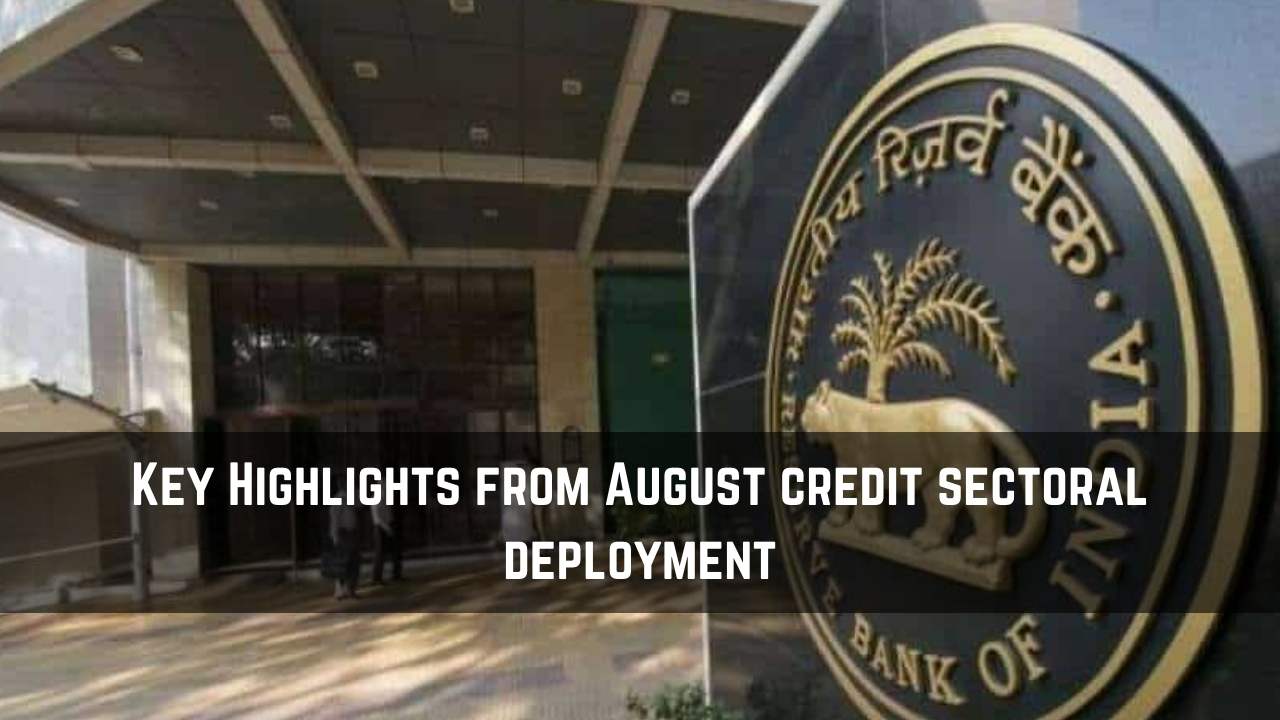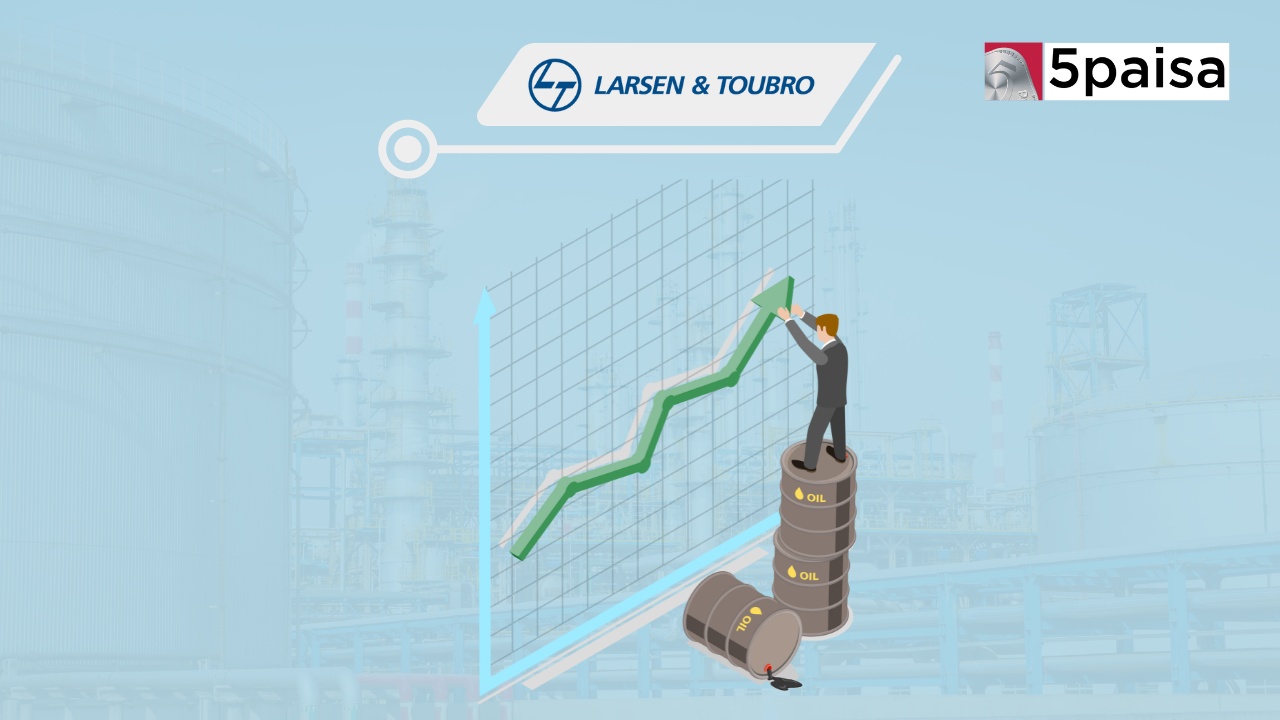Takeaways from August credit sectoral deployment

On 30th September 2022 RBI released data on sectoral deployment of bank credit for the month of August. According to bank credit sectoral deployment data for August 22, all verticals have seen growth on a YoY basis: retail credit is up by 19.5%, services are up by 17.2%, the Agri portfolio is up by 13.4%, and industry is up by 11.4%. Overall, non-food credit increased by 0.8% month-on-month and 5.0% year-to-date to reach Rs. 124.30 trillion. Non-food credit growth has increased by double digits for the previous five months, totaling 14.8% YoY.
a) Retail Credit Growth Continues:
Retail credit growth continues to outpace growth in all other credit categories: Overall retail credit growth is accelerating, adding 1.5% month-on-month, 19.5% YoY, and 7.9% year-to-date. Of the Rs. 539 billion in monthly retail credit growth that occurred on August 22, 31% came from housing loans, 11% from auto loans, 9% from credit card loans, and the remaining amount came from other loans. Retail loans increased by Rs. 5.96 trillion over the past 12 months, with 42% of that amount going toward housing, which is less than its proportion in the total retail book of about 50%.
Housing loans increased by 0.9% month-on-month and 6.0% year to date. On a low base, YoY growth picked up to 16.4%. Overall, retail credit growth will maintain a mid-to-high teens level given the normalization seen in the majority of economic sectors.
b) Credit Card growth continues:
After increasing by 6.4% month-on-month on July 22, the credit card portfolio increased by another 2.9% month-on-month, bringing its year-to-date gain to 13.3%. A whopping >60% increase from the lows seen in May 2020 during the covid first wave, the credit card portfolio currently stands at Rs1.67 trillion (1.5% of the overall non-food credit portfolio). Moreover, the growth of consumer durables loans increased by 2.3% month-on-month, 19.2% year-to-date, and 65.2% YoY. This shows normalization of spending on goods and services, as well as what appears to be an increase in revolver and EMI facilities.
c) Vehicle loan book saw an uptick:
Vehicle loans increased 1.3% month-on-month. This came after the first four months of FY2022 saw an average month-on-month growth of 2.2%. In the past three years, the vehicle loan portfolio has more than doubled from Rs. 2 trillion in March 2019 to Rs. 4.45 trillion, growing 19.5% YoY and 10.5% year-to-date.
d) MSME base effect sees a drop:
The medium corporate credit book increased by 35.6% YoY as a result of banks, especially PSBs, providing full support to MSMEs. However, this increase was only 0.4% month-on-month and 2.9% year-to-date, as opposed to a 5.0% year-to-date increase in non-food credit overall. The pace of lending to MSMEs has returned to normal with the cessation of ECLGS-led disbursements.
e) Industry credit growth sees an 8-year high:
Industry credit, which makes up 27.7% of all non-food industry credit, increased by 0.4% month-on-month to Rs. 31.95 trillion after averaging a 0.3% month-on-month increase over the previous three months from May 2021 to July 2022.
The industry portfolio's YoY growth rate of 11.4% was the highest in the previous 100 months. Utilizing existing sanction limits and re-leveraging in a few industries caused an industry credit to break out in the past three years that was in the range of Rs. 28 trillion to Rs. 29 trillion.
Consumer demand recovery, an increase in private capital expenditures, and an increase in government spending all have the potential to be important catalysts for the overall credit growth recovery.
Industry credit, which makes up 27.7% of all non-food industry credit, increased by 0.4% month-on-month to Rs. 31.95 trillion after averaging a 0.3% month-on-month increase over the previous three months from May 2021 to July 2022.
Main contributors to industry credit growth:
The main contributors to industry credit growth were petroleum, coal products, and nuclear fuels (up 19.2% month-on-month), pharmaceuticals and drugs (up 2.3% month-on-month), cement and cement products (up 1.7% month-on-month), telecommunication (up 1.7% month-on-month), and construction (up 0.8% month-on-month), while food processing (down 4.3% month-on-month), petrochemicals (down 3.2% month-on-month), and textiles (down 0.8% month-on-month partially offset the accretion. Industry expansion is anticipated to become a major factor in boosting credit expansion.
Non-Agricultural Gold Loan Portfolio:
After increasing by 3.1% month-on-month on July 22, the non-agricultural gold loan portfolio saw a sequential increase of 1.0% month-on-month on August 22. In comparison to NBFCs, banks are gaining market share in gold loans due to their improved focus and rate advantage. The overall growth rate of the gold loan portfolio was 36.7% CAGR over a two-year period and 43.3% CAGR over a three-year period.
Lending to Finance Corporations moderated in Aug’22:
On a high base, lending to NBFCs, housing finance corporations, and Private finance initiative (PFI) was moderated on August 22. However, on a year-over-year basis, lending to NBFCs increased by 27.8% and to housing finance corporations by 12.4%. These segments' year-to-date growth of 6–8% has contributed to the service sector's year-to-date growth of 4.8%. There was an 81.6% YoY increase in lending to public financial institutions. After gradually liquidating their high-risk holdings, NBFCs are now cautiously pursuing growth opportunities. Consequently, in contrast to the recent slowdown or deceleration, bank lending to NBFCs is anticipated to increase in FY23.
Other Services:
Other services saw an increase of 14.8% YoY and a flat month-on-month, which includes mutual funds, banking, and finance other than NBFCs and mutual funds, and other services not listed elsewhere under services.
- Flat ₹20 Brokerage
- Next-gen Trading
- Advance Charting
- Actionable Ideas
Trending on 5paisa
06
 Tanushree Jaiswal
Tanushree Jaiswal
Indian Market Related Articles
Disclaimer: Investment in securities market are subject to market risks, read all the related documents carefully before investing. For detailed disclaimer please Click here.
 5paisa Research Team
5paisa Research Team




